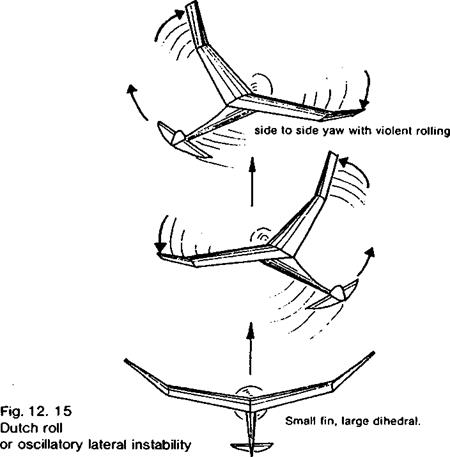DUTCH ROLL
If the fin area is too small and the dihedral large, a ‘Dutch roll’ or lateral oscillation results. The model, if disturbed by a side gust, tends to sideslip. The dihedral responds to this, as shown in Figure 12.15, by rolling the model against the sideslip, raising the ‘into slip’ wing. The fuselage, however, with too small a fin, tends to turn broadside to the flow. The initial small sideslip thus becomes a yaw increasing the slip combined with a roll away from it and the tendency increases until the wing may be rolled almost to the vertical
|
|
while the fuselage is at a considerable angle to the original flight direction. In this state, the fuselage yawing force, having achieved a more broadside-on attitude weakens, but the model is steeply banked. The result is a return sideslip in the opposite direction. The
dihedral responds to the change by rolling the wing back the other way, the fuselage attempts to turn broadside to the new slip direction and the model begins a wild oscillation from side to side rolling and yawing with the tail swinging wildly through an arc. The cure is to increase fin area or decrease dihedral, or both. The model with adequate fin power then yaws into sideslips, it has so-called weathercock stability. The dihedral, when the model is stable, is not so pronounced that it raises the into-slip wing very much. The ‘model responds to a side gust with a mild yaw into the gust with only a very slight roll. The requirements for lateral oscillatory stability are thus large fin area with small dihedral.














